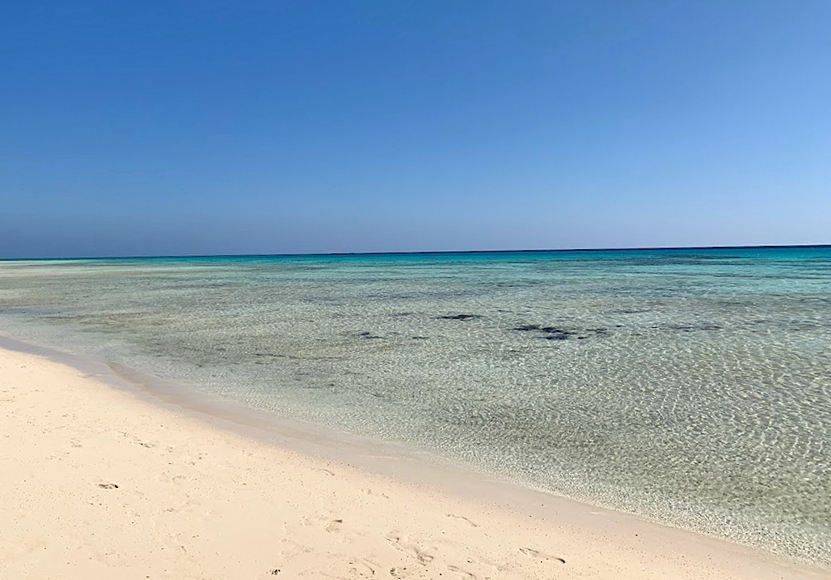Sharm el-Luli Bay, also known as Sharm el-Luliya or Ras Hankorab Beach, is located about 56 kilometers on the Egyptian Red Sea coast south-southeast of Marsā ʿAlam town and is part of Wadi El Gemal National Park.
The water at this remote sandy beach and lagoon is clear unless the sand is blown up by high winds or fin kicks from snorkelers or divers. To the west, behind the sandy beach, the terrain changes into a rocky desert area.Marine life includes clown fish, napoleons, puffer fish, butterfly fish and turtles, including hawksbill sea turtles.
The bay is considered one of the most beautiful beaches with almost untouched underwater world in Egypt and usually achieves high ratings on travel portals, which is certainly due to its seclusion and the protected location in a national park.
Access : Coordinates: 24.613078° 35.117455° / The bay is located about halfway from Marsā ‘Alam to Berenike and is six kilometers southeast of the entrance to Wadi El Gemal, the Valley of the Camels, or Cape Ra’s Baghdādī.
Highlights :
- Sharm el-Luli is part of Wadi El Gemal National Park. It therefore enjoys increased protection, and there is no tourist infrastructure far and wide – no hotels, no loungers, no toilets.
- Organized excursions to this bay are often offered in the hotels.
- Diving and snorkeling. The quite intact underwater world is certainly the highlight of the visit.
- Sharm el-Luli was one of the best 25 beaches in the world in 2018, ranked the 22nd position, according to TripAdvisor.
- Sharm El-Luli beach has been ranked on top of TripAdvisor’s list of 10 best beaches in the Middle East in 2018.
Go next : Wadi El Gemal National Park , One of the most beautiful national parks in Egypt with impressive nature and numerous human remains such as rock carvings and mines.

